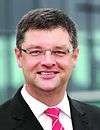Saxony state election, 2014
|
| ||||||||||||||||||||||||||||||||||||||||||||||||||||||||||||||||||||||||||||||||||||||||||||||||||||||||||||
| ||||||||||||||||||||||||||||||||||||||||||||||||||||||||||||||||||||||||||||||||||||||||||||||||||||||||||||
All 126 seats of the Landtag of Saxony 64 seats needed for a majority | ||||||||||||||||||||||||||||||||||||||||||||||||||||||||||||||||||||||||||||||||||||||||||||||||||||||||||||
|---|---|---|---|---|---|---|---|---|---|---|---|---|---|---|---|---|---|---|---|---|---|---|---|---|---|---|---|---|---|---|---|---|---|---|---|---|---|---|---|---|---|---|---|---|---|---|---|---|---|---|---|---|---|---|---|---|---|---|---|---|---|---|---|---|---|---|---|---|---|---|---|---|---|---|---|---|---|---|---|---|---|---|---|---|---|---|---|---|---|---|---|---|---|---|---|---|---|---|---|---|---|---|---|---|---|---|---|---|
| Turnout | 49.2% | |||||||||||||||||||||||||||||||||||||||||||||||||||||||||||||||||||||||||||||||||||||||||||||||||||||||||||
| ||||||||||||||||||||||||||||||||||||||||||||||||||||||||||||||||||||||||||||||||||||||||||||||||||||||||||||
 | ||||||||||||||||||||||||||||||||||||||||||||||||||||||||||||||||||||||||||||||||||||||||||||||||||||||||||||
| ||||||||||||||||||||||||||||||||||||||||||||||||||||||||||||||||||||||||||||||||||||||||||||||||||||||||||||
A state election was held on 31 August 2014 in the state of Saxony in Germany, as required by the state constitution. Minister-President Stanislaw Tillich sought to retain power.
Background
After the previous state election in 2009, the CDU emerged as the largest party and formed a coalition with the FDP, ending their coalition with the SPD. Thus, before the 2014 election, the Saxony state government was the only government nationwide that involved the FDP. Due to the national decline in support for the FDP, a continuation of this coalition seemed unlikely as it was uncertain whether the FDP would reach the 5% threshold necessary to gain seats.
The largest opposition party in Saxony was the Left Party. One possible outcome, according to the polls, would have been a coalition between the Left, the SPD and the Greens; however this option was rejected by both the SPD and the Greens before the election.
For the SPD, the state election in Saxony was the second electoral test after the European elections since being involved (from 2013) at the federal level as junior partners in the coalition government. Polls show that the public perceived the work of the SPD in government as positive. Issues that have been worked on by the government were primarily election promises of the SPD. Despite this, all polls suggested that the SPD would be heading for another third-place finish. In Saxony, the SPD's election campaign was highly tailored to their leading candidate, Martin Dulig, who also involved his family in the campaign. Dulig was also supported by former chancellor Schröder.
The AfD was hoping to gain its first representation in a state parliament in Saxony after the party had achieved its strongest results nationwide in both the federal elections and European elections in Saxony.[1] In the European elections, the party in Saxony received over 10% of the vote, compared to 7% nationwide.
In 2004, the far-right NPD secured their best ever result at a state election in Saxony. Since then, polls and election results have trended downwards with most polls suggesting the party would not cross the 5% threshold.
The Pirate Party achieved 1.9% of the vote in the previous state election. Despite early polling showing its support up to as much as 9% in Saxony, the party has since lost support and was averaging around just 2% in surveys.
Coalition talks before election
Polls suggested that the CDU would again be the largest party. The Minister-President Stanislaw Tillich (CDU) was therefore expected to lead coalition negotiations. In addition to the SPD, the Greens hoped for a coalition with the CDU, but a "black-green" coalition was considered unlikely because the Greens oppose coal mining in Saxony.[2]
Prior to the election, Tillich could imagine a coalition with the FDP, the SPD, the Greens and the AfD. For Carsten Linnemann, the chairman of the CDU/CSU-Business Association, a coalition with the Greens was a viable alternative if the FDP did not obtain any seats.[3] Even a coalition with the AfD was not ruled out by Tillich, although the federal head of the CDU had previously spoken out against it.[4]
The Left was unlikely to overtake the CDU, according to polls. The party wanted to form a coalition with the SPD in particular. The SPD, however, were skeptical towards such an alliance.[5] The NPD was not considered in the debate on coalitions with other parties.
Opinion polls
| Pollster | Date | CDU | Left | SPD | FDP | Greens | NPD | Pirates | AfD | Others |
|---|---|---|---|---|---|---|---|---|---|---|
| FGW | 21.08.2014 | 39% | 20% | 15% | 3% | 6% | 5% | — | 7% | 5% |
| uniQma | 18.08.2014 | 42% | 18% | 13% | 3% | 6% | 4% | 1% | 6% | 7% |
| IM Field | 09.08.2014 | 43% | 20% | 14% | 3% | 7% | 3% | — | 5% | 5% |
| INSA | 09.08.2014 | 40% | 19% | 14% | 5% | 5% | 4% | — | 6% | 6% |
| dimap | 10.07.2014 | 42% | 21% | 13% | 4% | 7% | 3% | — | 7% | 3% |
| Forsa | 20.06.2014 | 42% | 18% | 15% | 3% | 6% | 3% | — | 8% | 5% |
| uniQma | 13.06.2014 | 45% | 16% | 13% | 3% | 6% | 3% | 2% | 7% | 5% |
| dimap | 30.04.2014 | 43% | 18% | 16% | 4% | 6% | 4% | — | 6% | 3% |
| dimap | 29.03.2014 | 45% | 17% | 15% | 4% | 6% | 4% | — | 6% | 3% |
| INSA | 08.03.2014 | 43% | 22% | 15% | 2% | 5% | 1% | — | 7% | 2% |
| uniQma | 02.01.2014 | 49% | 15% | 17% | 2% | 6% | 1% | 2% | 6% | 2% |
| dimap | 20.08.2013 | 45% | 14% | 14% | 5% | 11% | 3% | 3% | — | 5% |
| Emnid | 09.04.2013 | 43% | 19% | 16% | 5% | 7% | 4% | 4% | — | 2% |
| TNS Infratest | 08.09.2012 | 41% | 19% | 16% | 4% | 7% | 3% | 7% | — | 3% |
| dimap | 05.09.2012 | 44% | 15% | 16% | 5% | 8% | 2% | 4% | — | 6% |
| Emnid | 15.03.2012 | 43% | 18% | 14% | 2% | 10% | 2% | 9% | — | — |
| IfM Leipzig | 16.10.2011 | 44% | 17% | 12% | 2% | 11% | 3% | 8% | — | — |
| dimap | 24.08.2011 | 43% | 19% | 12% | 6% | 11% | 5% | — | — | 4% |
| aproxima | 28.06.2011 | 42% | 21% | 15% | 6% | 8% | 3% | — | — | 5% |
| aproxima | 24.08.2010 | 42% | 23% | 16% | 5% | 7% | 4% | — | — | 3% |
| IfM Leipzig | 14.06.2010 | 40% | 20% | 16% | 6% | 12% | 3% | — | — | 3% |
| 2009 results | 30.08.2009 | 40.2% | 20.6% | 10.4% | 10.0% | 6.4% | 5.6% | 1.9% | — | 4.9% |
Results
< 2009 ![]()
| Party | Popular vote | Seats | ||||||||
|---|---|---|---|---|---|---|---|---|---|---|
| Votes | % | +/– | Seats | +/– | ||||||
| Christian Democratic Union Christlich Demokratische Union Deutschlands – CDU|| 645,344 | 39.4 | 59 | ||||||||
| Left Die Linke|| 309,568 | 18.9 | 27 | ||||||||
| Social Democratic Party of Germany Sozialdemokratische Partei Deutschlands – SPD|| 202,374 | 12.4 | 18 | ||||||||
| Alternative for Germany Alternative für Deutschland – AfD|| 159,547 | 9.7 | 14 | ||||||||
| Alliance '90/The Greens Bündnis 90/Die Grünen|| 93,852 | 5.7 | 8 | ||||||||
| National Democratic Party of Germany Nationaldemokratische Partei Deutschlands – NPD|| 81,060 | 5.0 (4.95) | 0 | ||||||||
| Free Democratic Party Freie Demokratische Partei – FDP|| 61,847 | 3.8 | 0 | ||||||||
| Other parties | 83,776 | 5.1 | 0 | |||||||
| Valid votes | 1,637,364 | 98.7 | ||||||||
| Invalid votes | 22,281 | 1.3 | ||||||||
| Totals and voter turnout | 1,659,645 | 49.2 | 126 | |||||||
| Electorate | 3,375,734 | 100.00 | — | |||||||
| Source: Wahlrecht.de | ||||||||||
Government formation
The CDU was obliged to seek new coalition partners, as their previous partner, the FDP failed to win any seats.[6] Tillich ruled out a coalition with the AfD.[7]
The CDU held exploratory talks with the Greens and the SPD. The talks between the CDU and the Greens ended without results; the Greens claimed that education policy and energy policy were the sticking points. Antje Hermenau, the Greens' lead candidate, then resigned on 20 September.[8]
Coalition talks started on 19 September between the CDU and the SPD. On 9 November 2014 the SPD announced that 82,2 % of its members had voted for the coalition agreement between the CDU and SPD.[9]
References
- ↑ Reinbold, Fabian (7 August 2014). "Radtour mit der AfD in Sachsen: Viel Deutschland, wenig Alternativen". Spiegel Online (in German). Retrieved 2017-09-25.
- ↑ Sirleschtov, Antje (16 August 2014). "Tillich schließt Koalitionsgespräche mit AfD nicht aus". Der Tagesspiegel Online (in German). ISSN 1865-2263. Retrieved 2017-09-25.
- ↑ "Unions-Mittelstandschef Linnemann offen für Schwarz-Grün". Focus Online (in German). 2 August 2014. Retrieved 25 September 2017.
- ↑ "Bundes-CDU untersagt Bündnis mit AfD". Tagesschau. 26 August 2014. Archived from the original on 27 August 2014. Retrieved 25 September 2017.
- ↑ Machowecz, Martin (10 July 2014). "Rot-rote Koalition: Gehen die zusammen?". Zeit Online (in German). Archived from the original on 23 February 2017. Retrieved 25 September 2017.
- ↑ "German anti-euro party enters state parliament in Saxony elections". Deutsche Welle. 31 August 2014. Retrieved 2017-09-25.
- ↑ Brown, Stephen; Breidthardt, Annika (31 August 2014). "Merkel's conservatives set to hold Saxony, eurosceptics make breakthrough". Reuters U.K. Retrieved 2017-09-25.
- ↑ "Sächsische Grüne verlieren ihr Aushängeschild". stern (in German). 20 September 2014. Retrieved 2017-09-25.
- ↑ "Mitgliedervotum". SPD Sachsen (in German). 7 October 2014. Retrieved 2017-09-25.





